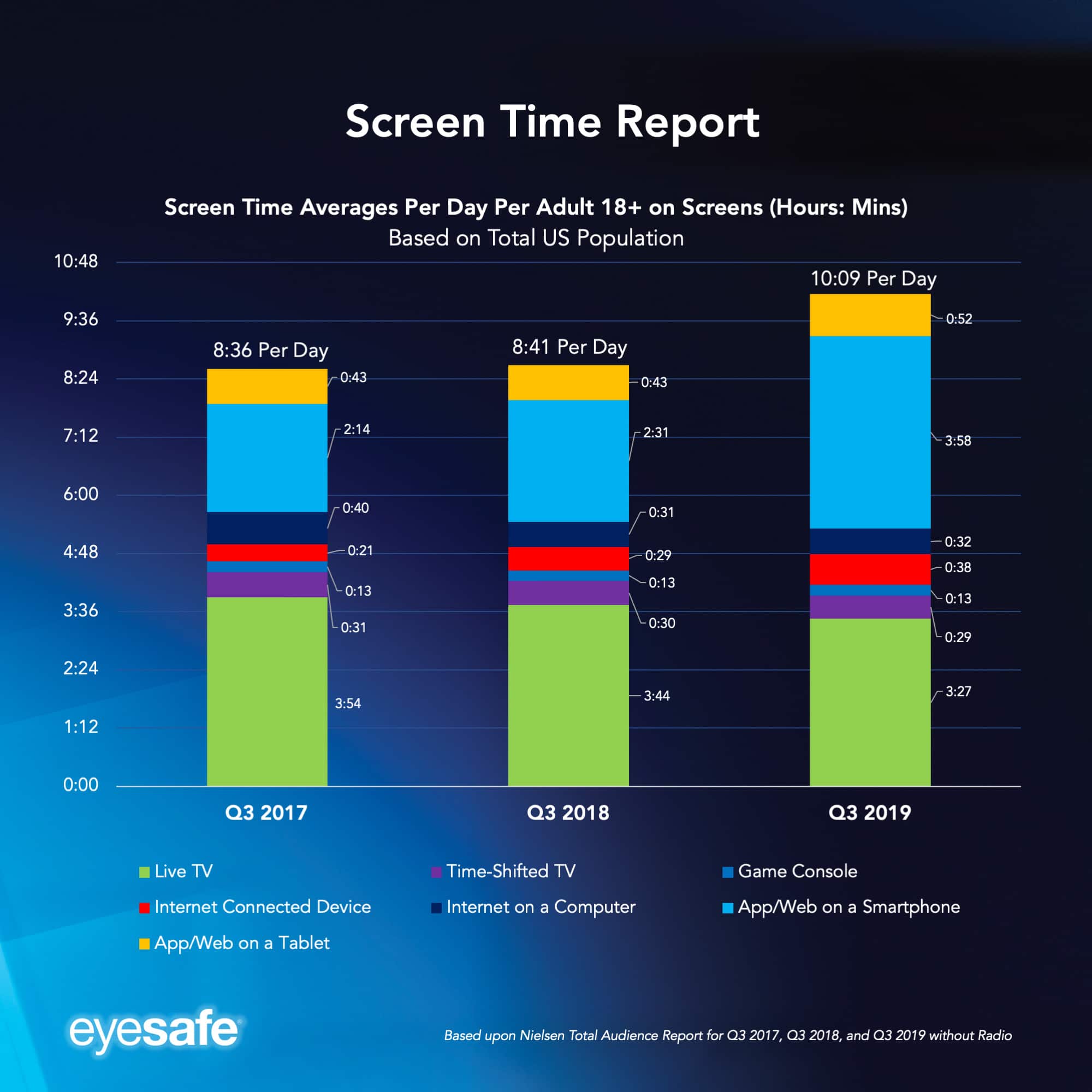Recent reports from Nielsen suggest that media consumption has increased 60% due to COVID-19 and home confinement during March, 2020. Given already high screen time hours, this increase is significant. Eyesafe analyzed the current Nielsen Audience Report numbers to develop the “Screen Time Report” which excludes Radio, to understand the actual amount of time the population is in front of devices on a daily basis.
Nielsen has found that in previous times of crisis requiring forced time spent home can lead to a 60% increase in media use. Additional surveying from Nielsen has found that working from home results in increased screen time with worker in the office spending more than 21 hours per week, and workers from home spending 25 hours per week, on work devices.
With a 60% increase in TV and Game Console Media use, and 14% increase in Mobile and Work-Related Device Use, Eyesafe estimates U.S. screen time per person 18+ has increased to 13:28 hours per day in March 2020, up from 10:09 hours per day in Q3 2019.
The Eyesafe estimated per day use of screens for March 2020 in the U.S. includes:
- Live TV: 5:31
- Time-Shifted TV: 0:46
- Game Console: 0:20
- Internet Connected Device: 0:43
- Internet on a Computer: 0:36
- App/Web on a Smartphone: 4:31
- App/Web on a Tablet: 0:59
- Total Screen Time Per Day: 13:28
This shift in screen time is resulting in increased high-energy blue light exposure, concerning for children and adults. Further analysis will review this continued trend in screen time consumption globally and exposure to high-energy blue light in our new reality.

